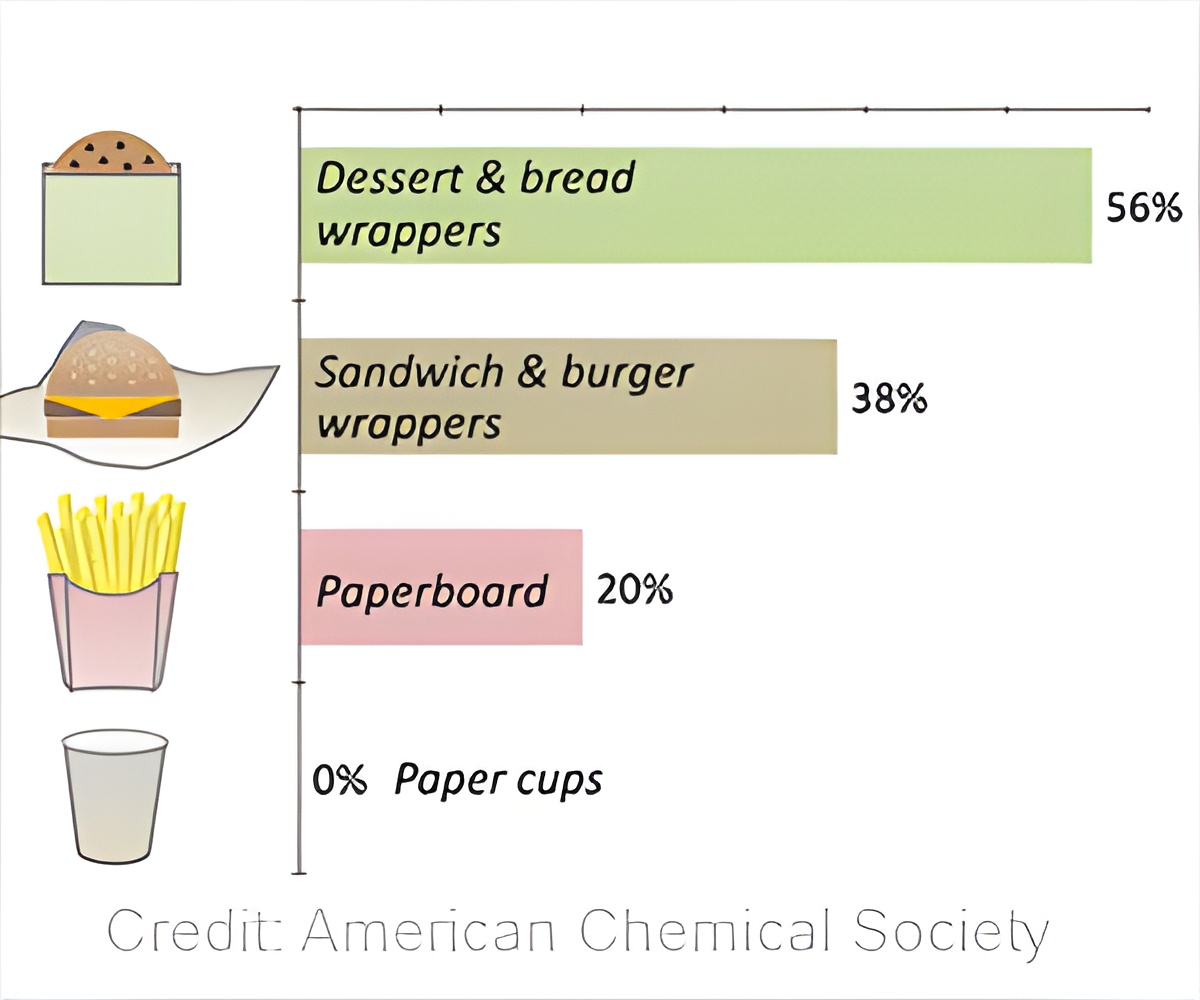Grease-proof food wrappers, drink containers contain fluorinated chemicals that leach into food but can now be tracked using a new technology.

- A new radio tracing method developed by UAB Radiology, enabled researchers to discover that toxic chemicals known as perfluorinated alkyl substances, or PFASs were present in all parts of the human body.//
- Tracing PFAS compounds conventionally is difficult and so the new method tags the intact PFAS compounds with a fluorine-18 radio tracer.
- Radioisotope fluorine-18 is commonly used for medical positron emission tomography scans in hospitals around the world.
"For the first time, we have a PFAS tracer or chemical that we have tagged to see where it goes in mice," said Suzanne Lapi, Ph.D., senior author of the study published today in the Journal of Environment Science and Technology.
"Each of the tracers exhibited some degree of uptake in all of the organs and tissues of interest that were tested, including the brain. The highest uptake was observed in the liver and stomach, and similar amounts were observed in the femur and lungs."
Why are PFAS’s Harmful?
PFASs are often used in stain-resistant products, firefighting materials and nonstick cookware and not meant for ingestion. Previous studies have shown PFASs can migrate, contaminating the food and, when consumed, accumulating in the body.
- Exposure to PFASs is linked to kidney and testicular cancer, elevated cholesterol, decreased fertility, and thyroid problems in adults.
- Exposure to PFASs is linked to adverse effects on growth, learning and behavior and decreased immune response to vaccines in children.
Tool To Measure PFAS’s in the Body
Lapi says the new novel tool developed by the research teams can be used for studying PFAS behavior in environmental remediation studies to measure the fate of radiolabeled compounds in environmental treatment systems.
In addition to kidney and testicular cancer, scientists have previously found high cholesterol, thyroid disease, pregnancy-induced hypertension and ulcerative colitis to be correlated to the amount of perfluorooctanoic acid, or PFOA, found in the blood of people who were exposed to the tainted water.
As a result, the Environmental Protection Agency and U.S. manufacturers reached a compromise to voluntarily remove two specific "long-chain" PFAS from the U.S. market by 2015 including PFOA. However, industry has switched from these "long-chain" forms of PFAS to shorter-chained versions of the same chemicals, Peaslee says. There are no toxicology data available for most of the alternative short-chain PFAS compounds used commercially.
Future steps
Lapi's team makes radioactive molecular imaging agents for nuclear medicine using the UAB Imaging Facility's cyclotron, a type of particle accelerator that moves protons, one kind of charged particle, along a spiral path to strike a material to produce radioisotopes.
These radioisotopes can be chemically attached to molecules created to home in on biological targets of interest. These targets typically include certain receptors on cancer, and lung and heart function. They also look at different tracers for neurology.
When researchers looked at the PFAS chemicals and saw their structure, Lapi says, her group thought the chemistry of the compound was amenable enough to do radiolabeling with their techniques.
So far, Lapi says, the group has looked at three compounds, far short of the hundreds of PFASs that have been identified. "While I don't think we will look at all of these PFASs, we would like to look at different families of these compounds and see how they are distributed in the body," Lapi said.
"Because even with very small changes in these compounds, we were able to see differences in brain uptake, which is important because these may have neurological impacts. We saw different clearance patterns, blood binding and other things. We want to look at different classes of compounds, how they're excreted from the body, how they accumulate, and see if we can really say something about how you would get rid of these compounds."
The next step after that would be to identify how this newly discovered technique could be used to clean up compounds in environmental situations where there is a contaminate issue.
Reference
- Suzanne Lapi et al., Radiosynthesis and biological distribution of [18F]-labeled perfluorinated alkyl substances, Journal of Environment Science and Technology (2017), http://dx.doi.org/10.1021/acs.estlett.7b00042.
Source-Medindia















